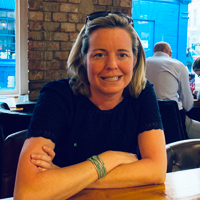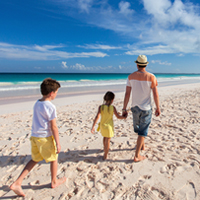7 Weekend Getaways for Digital Nomads Living in Daegu
Summary: Planning a quick weekend getaway is a great way to save money while still seeing new places. Here are 7 fun weekend getaways for digital nomads living in Daegu.
Daegu, South Korea, is a vibrant city known for its rich history, culture, and modern amenities. As a digital nomad, you have the flexibility to explore the wonders of Korea while staying connected to your work. While Daegu itself offers plenty to see and do, the weekends are a perfect time to venture out and discover new places. From popular tourist spots to hidden gems, here are seven fun weekend getaways that are just a short trip from Daegu.
Gyeongju
Gyeongju, the ancient capital of the Silla Kingdom, is a must-visit for history buffs and culture enthusiasts. This UNESCO World Heritage site is filled with historical landmarks such as Bulguksa Temple, Seokguram Grotto, and the Daereungwon Tomb Complex. You can also visit the Gyeongju National Museum to learn more about the area's rich history. For a relaxing experience, take a stroll around the scenic Anapji Pond, especially beautiful at night when the historic structures are illuminated.
How to Get There: The most convenient way to reach Gyeongju from Daegu is by train. The journey takes about 30 to 50 minutes via the KTX (Korea Train Express) from Dongdaegu Station.
Travel Tip: Don't miss out on the Gyeongju Bread, a local delicacy filled with sweet red bean paste. It's a perfect snack as you wander through the city's ancient sites.
Where to Stay: The Hilton Gyeongju offers luxurious accommodations with stunning views of Bomun Lake. For a more traditional experience, consider staying at a hanok guesthouse like Gyeongju Hanok Village.
Where to Eat: Visit the Hwangnam Bread shop to try the famous Gyeongju Bread. For a traditional Korean meal, head to Ssambapjip, known for its delicious ssambap (rice wrapped in leaves) and a variety of side dishes.
Boseong Green Tea Fields
Boseong is renowned for its vast and picturesque green tea fields. The Daehan Dawon Tea Plantation offers a unique experience where you can walk among the rows of tea plants, learn about the tea-making process, and sample some of the finest green tea in Korea. The plantation also provides a stunning backdrop for photos, especially during the spring when the tea bushes are lush and green.
How to Get There: To get to Boseong, take a bus from Daegu Seobu Bus Terminal to Gwangju, and then transfer to a Boseong-bound bus. The total travel time is around 4 to 5 hours.
Travel Tip: Visit during the Boseong Green Tea Festival in May to enjoy cultural performances, tea picking, and other tea-related activities.
Where to Stay: The Yulpo Beach Hotel & Resort offers comfortable rooms and is located near the tea fields and Yulpo Beach, perfect for a relaxing dip after a day of exploration.
Where to Eat: Stop by the Tea House in the plantation area to enjoy green tea ice cream and other tea-infused treats. For a full meal, try the local specialty, green tea pork belly, at a nearby restaurant.
Andong Hahoe Folk Village
Andong Hahoe Folk Village is a traditional village that has preserved the architecture and culture of the Joseon Dynasty. As a UNESCO World Heritage site, it offers a glimpse into Korea's past with its well-preserved hanok houses, folk performances, and the iconic Hahoe Mask Museum. The village is also famous for its mask dance drama, which you can watch during your visit.
How to Get There: From Daegu, take an intercity bus to Andong, which takes about 1.5 to 2 hours. From Andong Bus Terminal, take a local bus directly to the Hahoe Folk Village.
Travel Tip: Try to visit on a weekend when the Hahoe Mask Dance Performance is held. It's a fascinating cultural experience that shouldn't be missed.
Where to Stay: Stay at the traditional Rakkojae Andong Hahoe, which offers an authentic hanok experience with modern comforts.
Where to Eat: Enjoy Andong jjimdak, a savory braised chicken dish, at one of the local restaurants in Andong city before heading to the village.
Yeongdeok Crab Street
For seafood lovers, Yeongdeok Crab Street is an unusual and delightful destination. This coastal area is famous for its snow crabs, which are caught fresh and served in a variety of ways. You can enjoy a feast of steamed crabs, crab sashimi, and other seafood delicacies while taking in the beautiful ocean views. The experience is both a culinary adventure and a scenic retreat.
How to Get There: Take a bus from Daegu to Yeongdeok, which usually takes around 3 hours. Once in Yeongdeok, Crab Street is easily accessible by taxi or local bus.
Travel Tip: Visit during the Yeongdeok Snow Crab Festival in March to participate in crab-catching contests, cooking demonstrations, and other fun activities.
Where to Stay: The Yeongdeok Blue Road Pension offers cozy accommodations with ocean views, perfect for a weekend seafood getaway.
Where to Eat: Head to any of the restaurants along Crab Street to indulge in the freshest snow crabs. Many of these establishments offer set menus that let you sample various crab dishes.
Seomun Market
Seomun Market is one of the largest traditional markets in Daegu and a great place to experience the local culture without traveling far. It's a bustling hub where you can find everything from textiles and clothing to street food and local delicacies. Foodies can savor treats like hotteok (sweet pancakes), bindaetteok (mung bean pancakes), and makchang (grilled intestines). The market also comes alive at night with vendors selling a variety of goods and food items.
How to Get There: Seomun Market is located in the heart of Daegu and is easily accessible by subway. Take the Daegu Metro Line 2 to Seomun Market Station and use Exit 1.
Travel Tip: Visit the market in the evening when the Night Market opens, offering a different atmosphere with live music and a wide array of food stalls.
Where to Stay: The nearby Novotel Ambassador Daegu provides a comfortable and convenient base for exploring the market and the city.
Where to Eat: Inside Seomun Market, look for the food alley where you can try various Korean street foods. Don't miss the famous Daegu-style chicken gizzard skewers.
Juwangsan National Park
Juwangsan National Park is an off-the-beaten-path destination that offers stunning natural scenery with its dramatic cliffs, waterfalls, and lush forests. It's an ideal spot for hiking and photography, with trails that cater to all levels of fitness. The park's main attractions include the Juwangsan Mountain, Daejeonsa Temple, and the beautiful Jusanji Pond, which is especially picturesque in the autumn.
How to Get There: From Daegu, take an intercity bus to Cheongsong, and then transfer to a local bus that goes to Juwangsan National Park. The total journey takes about 3 to 4 hours.
Travel Tip: Make sure to visit Jusanji Pond early in the morning when the mist over the water creates a magical and serene atmosphere.
Where to Stay: The Cheongsong Apple Stay Hotel offers a comfortable stay with amenities and is located within a short drive from the national park.
Where to Eat: After a day of hiking, enjoy a hearty meal of Cheongsong apple pork belly at a local restaurant near the park entrance.
Upo Wetland
Upo Wetland is one of the largest natural wetlands in South Korea and a hidden gem for nature enthusiasts. It's a peaceful retreat where you can observe a diverse range of wildlife and plants. The wetland offers walking and cycling paths, as well as guided eco-tours that allow you to learn about the importance of this unique ecosystem. The tranquility and beauty of Upo Wetland make it a perfect spot for relaxation and reflection.
How to Get There: Take a bus from Daegu to Changnyeong, and then transfer to a local bus that goes directly to Upo Wetland. The journey takes approximately 2 hours.
Travel Tip: Rent a bicycle to explore the wetland's extensive network of paths, which provide an immersive way to experience the area's natural beauty.
Where to Stay: The Changnyeong Tourist Hotel is a convenient option with comfortable rooms and easy access to the wetland.
Where to Eat: Sample the local specialty, Changnyeong Nakji (octopus), at one of the restaurants in Changnyeong town before heading to the wetland.
About the Author
 Betsy Burlingame is one of the founders of Digital Nomad Exchange and the Founder and President of Expat Exchange. She launched Expat Exchange in 1997 as her Master's thesis project at NYU. Prior to Expat Exchange and Digital Nomad Exchange, Betsy worked at AT&T in International
and Mass Market Marketing. She graduated from Ohio Wesleyan University
with a BA in International Business and German.
Betsy Burlingame is one of the founders of Digital Nomad Exchange and the Founder and President of Expat Exchange. She launched Expat Exchange in 1997 as her Master's thesis project at NYU. Prior to Expat Exchange and Digital Nomad Exchange, Betsy worked at AT&T in International
and Mass Market Marketing. She graduated from Ohio Wesleyan University
with a BA in International Business and German.
Some of Betsy's articles include 12 Best Places to Live in Portugal, 7 Best Places to Live in Panama and 12 Things to Know Before Moving to the Dominican Republic. Betsy loves to travel and spend time with her family. Connect with Betsy on LinkedIn.

Get a quote for international health insurance from our partner, William Russell.
Get Quote
 William Russell
William RussellGet a quote for international health insurance from our partner, William Russell.
Get Quote
![]() Korea Forum
Korea Forum
Talk with other digital nomads and expats in Korea on our Korea forum - meet people, get advice and help others.
![]() Contribute
Contribute
Help others in Korea by answering questions about the challenges and adventures of living in Korea.
Digital Nomads in Korea offer advice about healthcare, hospital visits, emergency rooms visits, finding a doctor and buying health insurance in Korea.

 Daegu, Korea
Daegu, Korea


